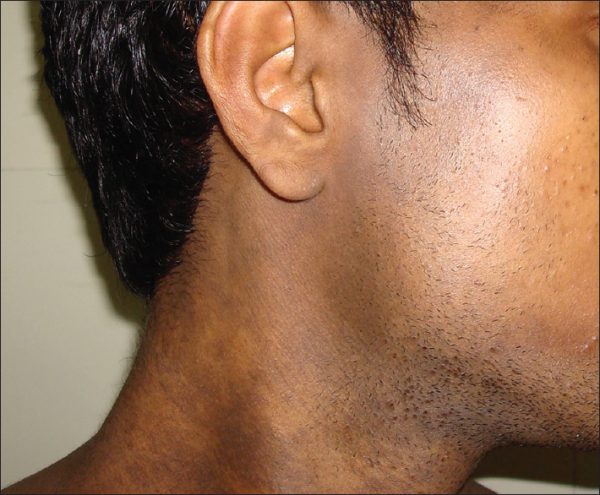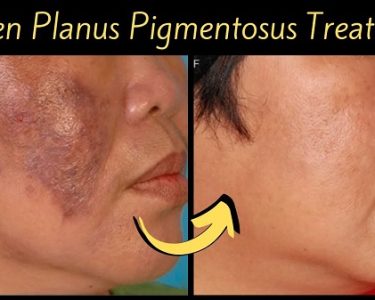Lichen Planus Pigmentosus: Definition, Causes and Symptoms
Lichen Planus Pigmentosus (LPP) is an uncommon skin disorder that presents with discolored patches of skin on the body. It usually affects the arms, legs, trunk, and scalp, but can also appear in other areas. It is characterized by a combination of flat-topped reddish-brown or purplish spots, sometimes with fine white lines forming on them. In some cases, these spots may be accompanied by itching or burning sensations. The condition is not contagious and typically appears in adulthood; however it can occur at any age. The exact cause of LPP is still unknown but believed to be related to an underlying autoimmune disorder. LPP may also be triggered by certain drugs such as anti-seizure medications and some antibiotics. The primary symptom of LPP is discoloration of the skin in patches or streaks that range from light pink to dark brown or black. These patches tend to appear symmetrically on both sides of the body and may often have a velvety texture. In some cases, there may be itching or burning sensations associated with the discolored patches.
Living with Lichen Planus Pigmentosus: Tips for Coping
Living with Lichen Planus Pigmentosus (LPP) can be difficult for those affected by the condition; however there are several tips that can help manage its symptoms and improve quality of life. It’s important to make sure you are under the supervision of a dermatologist who can properly diagnose your condition and provide appropriate treatment options. In addition to regular doctor’s visits, individuals living with LPP should pay close attention to their diet and lifestyle choices. Eating a balanced diet rich in fruits and vegetables will provide essential nutrients that can help keep inflammation at bay while avoiding known triggers such as certain drugs which might worsen symptoms associated with LPP. Additionally, exercise can help improve overall health while reducing stress levels.
While managing symptoms associated with LPP may prove difficult at times, it’s important to remain positive throughout your healing journey as feelings of hopelessness or depression are common side effects of living with chronic conditions like this one. Avoiding exposure to direct sunlight may also help minimize skin irritation caused by UV rays since some individuals affected by this condition tend to experience photosensitivity reactions when exposed directly to sun rays for prolonged periods of time. Finally, it’s important for individuals living with Lichen Planus Pigmentosus (LPP) seek out support from family members and friends who understand your condition so you don’t feel alone during your healing journey and have emotional support when needed most!
How to Manage the Symptoms of Lichen Planus Pigmentosus
Lichen planus pigmentosus (LPP) is a skin condition that causes discolored patches to appear on the body. The patches can range in color from light brown to dark grey, and usually appear as symmetrical shapes on the skin. While it’s not a serious health risk, it can cause discomfort, itching, and other symptoms that make living with LPP difficult. Fortunately, there are steps you can take to effectively manage your symptoms and create a more comfortable life.
It is important to keep your skin clean and well moisturized. Keeping your skin hydrated will help prevent itching and reduce inflammation. Using mild cleansers or soaps when showering or bathing is recommended. After showering or bathing, it’s best to use a hypoallergenic moisturizer twice daily; this will help prevent itching and promote healing.
Protecting your skin from the sun is also essential when managing LPP symptoms. Unprotected exposure to the sun’s UV rays can worsen existing conditions and lead to further discoloration of affected areas. Sunscreen that has an SPF of 30 or higher should be applied every two hours if you plan on being in direct sunlight for more than fifteen minutes.
When dealing with itchiness, try not to scratch, as this can lead to irritation or infection of the affected area. Instead, apply a cold compress several times a day for five minutes at a time or use an anti-itch cream as directed by your doctor.
In some cases, medications are prescribed by doctors to treat LPP symptoms such as itchiness or inflammation. It’s important that you work closely with your doctor when taking any medications; follow all instructions carefully and never take more than what was prescribed.
Finally, emotional support is very important when managing any chronic illness. If you’re feeling overwhelmed by your diagnosis or managing day-to-day activities with LPP has become difficult, it may be helpful to seek support from friends, family members, counselors or online support groups who understand what you’re going through.
By following these tips and working closely with your healthcare provider, you can manage the symptoms of Lichen Planus Pigmentosus more effectively and live comfortably while living with this condition.
Tips for Coping with Lichen Planus Pigmentosus
Living with Lichen Planus Pigmentosus can be difficult, but there are steps you can take to ensure your health and well-being. Coping with this condition isn’t easy, so having the right strategies in place can make all the difference. Here are some tips to help you cope when living with Lichen Planus Pigmentosus:
- Work with a doctor or dermatologist: It’s important to work closely with a medical professional who is knowledgeable about lichen planus pigmentosus (LPP). This way, they can regularly monitor your treatment plan and make sure it’s working. A dermatologist may also prescribe medications that can treat the symptoms of LPP.
- Avoid triggers: Certain factors such as stress, ultraviolet light exposure, and certain medications can trigger or worsen LPP symptoms. Your doctor may ask you to keep a diary of your daily activities so that you can easily identify any potential triggers and take steps to avoid them.
- Protect yourself from the sun: Ultraviolet (UV) radiation from the sun or artificial sources like tanning beds can worsen LPP lesions. To protect yourself, always wear sunscreen and protective clothing when outdoors and avoid using tanning beds.
- Limit stress: Stress has been linked to an increase in LPP symptoms, so managing it is key for coping with lichen planus pigmentosus. Try taking up relaxing activities such as yoga or meditation or talking to a therapist if necessary.
- Follow treatment instructions carefully: Your doctor will provide instructions for treating your condition which should be followed closely to ensure optimal results. Be sure to ask questions if something isn’t clear and follow any advice regarding lifestyle changes that may help reduce symptoms.
- Eat a nutrient-rich diet: A balanced diet is important for overall health as well as helping cope with lichen planus pigmentosus. Eating plenty of fruits and vegetables provides the body with essential nutrients that can help reduce inflammation and improve skin health.
- Take good care of your skin: Keeping your skin clean and hydrated is key for reducing irritation caused by lichen planus pigmentosus lesions. Use gentle cleansers and moisturizers on affected areas and be sure not to scrub too hard as this could aggravate the skin.
Living with Lichen Planum Pigmentosu is not easy but following these tips may help you manage the condition better so that you can enjoy life without feeling hampered by it too much.Treatment Options and Resources for People Living with Lichen Planus Pigmentosus
Living with Lichen Planus Pigmentosus can be incredibly difficult. It is important to understand the treatment options available, and to know that help is at hand. Lichen Planus Pigmentosus is a skin condition characterized by a unique form of rash. It has been found to affect both men and women, but more commonly women in their thirties and forties. While there may not be a cure as such, there are some steps that can be taken to manage the condition and minimize its impact on everyday life. This section will provide tips for coping with Lichen Planus Pigmentosus, as well as an overview of the available treatment options and resources.
Tips for Coping with Lichen Planus Pigmentosus
It can be easy to become overwhelmed when faced with a chronic skin condition like Lichen Planus Pigmentosus. It is important to remember that it is possible to lead a normal life, even if it takes some adjustments. Here are some tips for coping:
- Stay informed – Read up on the latest information about Lichen Planus Pigmentosus so you know what treatments are available.
- Connect – Talk to your doctor about your concerns and get their advice on how best to manage your condition.
- Ask questions – Don’t be afraid to ask your doctor or healthcare provider questions; they are there to help.
- Keep track – Use a journal or other method of tracking your progress so you can stay on top of your condition.
- Find support – Reach out to friends and family who can support you through this time. Online forums may also prove helpful.
Medical Treatment Options
The most common Treatments for Lichen Planus Pigmentosus are topical creams, ointments or lotions applied directly onto the affected area. These medications can reduce inflammation, itching, discomfort and scarring associated with the condition. In some cases, stronger medications such as steroids may need to be prescribed by a doctor.
Self-Care
In addition to medical treatment options, certain lifestyle changes may also be beneficial in managing symptoms associated with Lichen Planus Pigmentosus. These include reducing stress levels through relaxation techniques such as yoga or meditation; avoiding hot baths or showers; wearing loose clothing made from breathable fabrics; keeping hydrated; eating healthily; exercising regularly; avoiding certain soaps or products which irritate the skin; using sunscreen when outdoors; using gentle cleansers rather than harsh soaps when washing affected areas; and avoiding direct sunlight in areas where symptoms occur.
Other Resources
There are many resources available for people living with lichen planopigmentous (LPP). Many organizations provide valuable advice on living with LPP, including support groups that allow people struggling with similar conditions share experiences in order to gain insight into dealing with their problems effectively. Additionally, online resources such as websites or blogs written by people living with LPP offer advice on coping strategies that have proven successful for them.
Living with Lichen Planopigmentous involves learning how best manage this chronic skin disorder each day. The key is finding out what works best for you in terms of symptom relief both medically and through self-care strategies while gaining access to any necessary resources along the way.
Conclusion
Living with Lichen Planus Pigmentosus can be a difficult experience, but there are some tips for coping that can help. It is important to talk to your doctor about your treatment options and take steps to manage the condition. Self-care, such as avoiding triggers, using moisturizers, and taking supplements can also be beneficial. Additionally, getting support from family and friends, engaging in stress-relieving activities like exercise or yoga, and seeking counseling are great ways to cope with the day-to-day challenges of living with Lichen Planus Pigmentosus. Even though it can be intimidating at first, having a plan for managing the condition is essential for long-term health.




